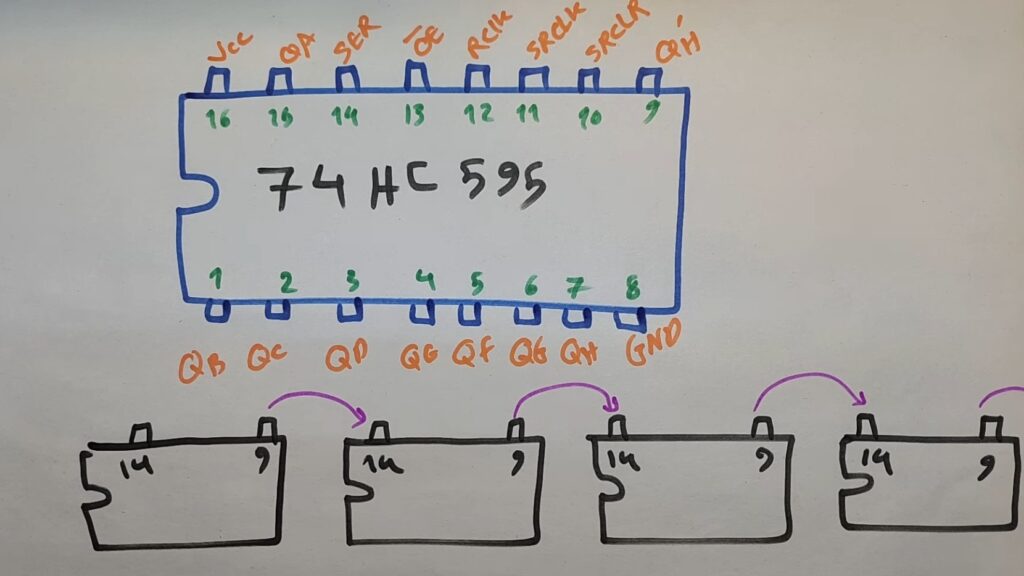
A recent video by the hacker known as Electronic Wizard introduces the 74HC595 shift register, detailing how it can be effectively used to drive 7-segment displays. This technology is particularly valuable for hobbyists and engineers who wish to manage microcontroller pin usage without sacrificing functionality. By employing the 74HC595, users can enhance the quality of their projects while minimizing the demands on their microcontrollers.
The 74HC595 functions as a small one-byte memory storage device, with its data accessible via eight output pins. Unlike traditional memory systems, it does not require an input address. Each time the clock pin (CLK) is pulsed, the bits in the memory shift right by one position, creating space for new data on the left. This capability allows for daisy chaining multiple 74HC595 units; the bits that shift off the right side can be passed to another unit, connecting through pin 9 to pin 14.
One noteworthy feature highlighted by Electronic Wizard is pin 13, known as the active-low Output Enable. This feature prevents unwanted data from displaying on 7-segment displays during the initialization phase, ensuring a clean start for projects. Additionally, the 74HC595 can provide its own current, which reduces the power burden on the microcontroller, offering both efficiency and reliability.
Advantages Over Multiplexing
While Electronic Wizard also discusses how to use multiplexing techniques to drive several 7-segment displays, he points out several limitations. Multiplexing often requires a larger number of pins and can lead to high-frequency flashing. Although this rapid switching is generally imperceptible to the human eye, it may become visible on some cameras and recording devices. In contrast, the 74HC595 enables users to efficiently manage multiple displays using only three pins from the microcontroller.
The bottom line is clear: by utilizing the 74HC595 shift register, users can drive one or more 7-segment displays effectively while maintaining a streamlined setup. For those seeking comprehensive knowledge of its features and how to maximize its potential, Electronic Wizard encourages viewers to watch the full video.
For enthusiasts interested in further applications of the 74HC595, there is also information available on the Bus Pirate 5, which successfully employs two of these shift registers to gain an additional 16 pins on its board. This demonstrates the versatility and significance of the 74HC595 in modern electronics projects.







